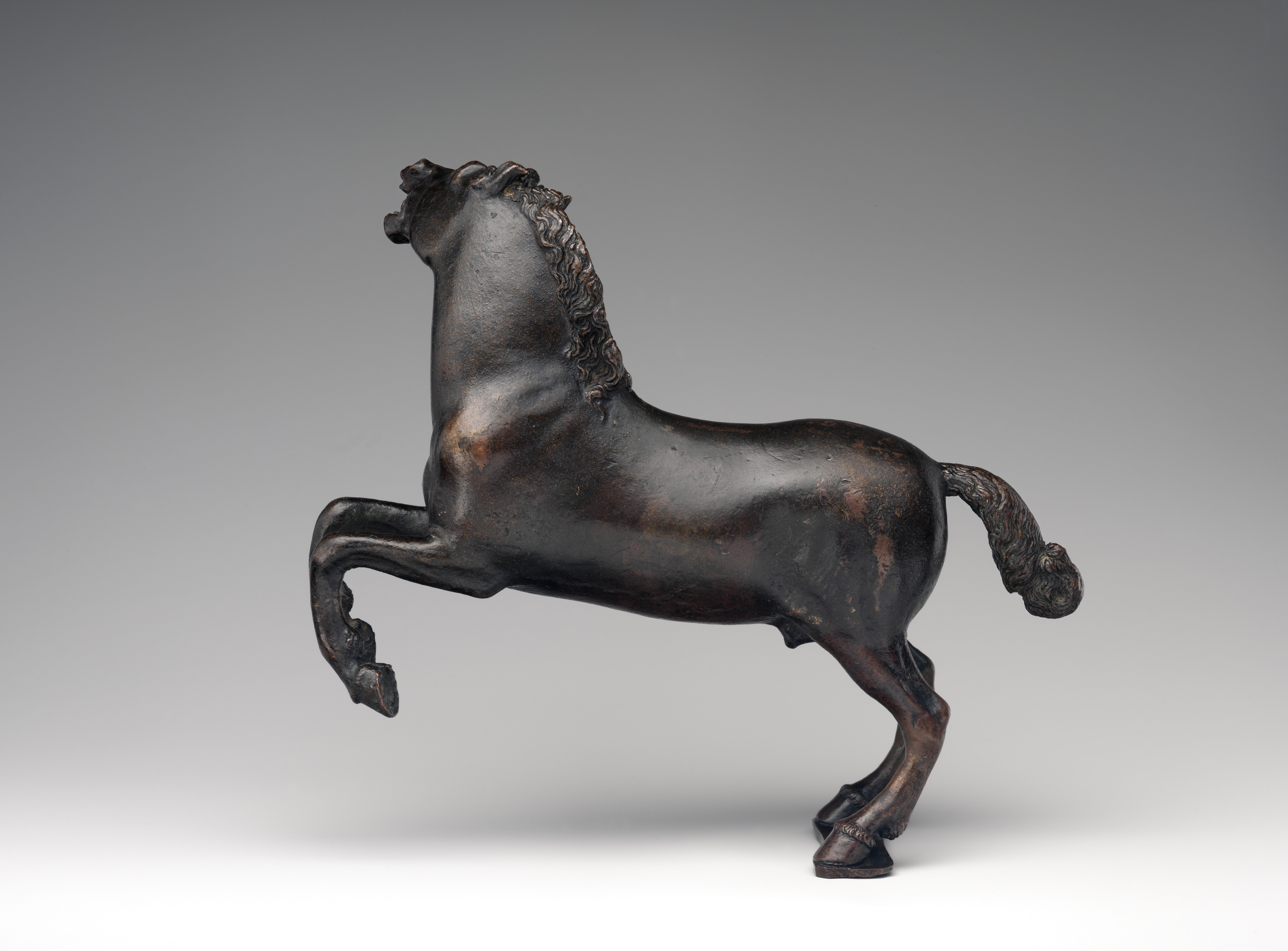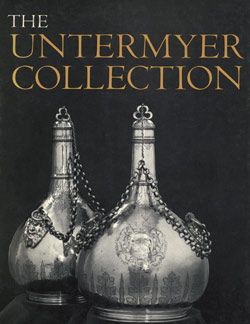Rearing horse
Possibly by Severo Calzetta da Ravenna Italian
Not on view
At least ten examples of this popular model are listed by Alison Luchs and Dylan Smith, writing on the example in the Robert H. Smith collection, which, along with that in the Ca’ d’Oro, Venice, is one of the best.[1] Another, in a private collection, has been added by Davide Banzato, who attributes it to Bellano on the somewhat sympathetic basis that it is relieflike in its formulation, but it has none of the faceted quality we prize in that artist.[2] Its chief distinction is the show of nails in the hooves. Ours rears higher than the others on legs with considerable tension, but it may be noted that the rear legs were broken and repaired at a later date, and the hooves are currently supported on the underside by means of a short metal plate.[3]
Luchs and Smith demonstrate that these steeds were worked up individually after a master model, thereby accounting for subtle differences among them, and that the casting was effected with Severo’s characteristic transverse wires, square holes, and fills. Their idea that one of them inspired Giovanni Antonio da Pordenone’s lost fresco Marcus Curtius Leaping into the Void is not compelling. More to the point is Jeremy Warren’s thought that Severo may have been responding to his friend Pomponius Gauricus’s advice to sculptors, in De Sculptura (1504), that in order to understand their equestrian subjects, they should practice riding themselves—not that this animal has a particularly convincing anatomy. By this date, very few had investigated compositions with horses balanced on hind legs. Another notion of Warren’s, that our modeler could have been motivated by the masterpiece Bellerophon Taming Pegasus by the Florentines Bertoldo di Giovanni and Adriano Fiorentino, now in the Kunsthistorisches Museum, is also attractive.[4] That bronze’s first owner was probably the Paduan scholar and close Medicean ally Alessandro Cappella. It was documented as belonging to him between 1521 and 1543 and was probably easily consultable in his house. The rearing Pegasus would be virtually revolutionary in its freedom were not his body anchored by that of the young hero Bellerophon. The amiable head of Bertoldo’s steed was not very well understood by Severo, who gave our horse a sharp little tongue. Infants sometimes encountered astride horses of our model seldom seem to have belonged there originally.[5]
-JDD
Footnotes
(For key to shortened references see bibliography in Allen, Italian Renaissance and Baroque Bronzes in The Metropolitan Museum of Art. NY: The Metropolitan Museum of Art, 2022.)
1. For the latter, see Warren in Padua 2001, cat. 30.
2. Banzato and Gastaldi 2015, cat. 26.
3. R. Stone/TR, November 12, 2020. XRF analysis identified the metal as a high copper alloy. F. Carò/AR, October 31, 2016.
4. KHM, KK 5596; see Draper 1992, pp. 176–85, no. 18.
5. Pace Jestaz 1972, pp. 75–77. An exception is his fig. 11, in the Museo Civico dell’Età Cristiana, Brescia, where a long prong extends from the boy’s seat to slot him into the mount’s back. See also Nicodemi 1933, p. 169.
Due to rights restrictions, this image cannot be enlarged, viewed at full screen, or downloaded.
This artwork is meant to be viewed from right to left. Scroll left to view more.





